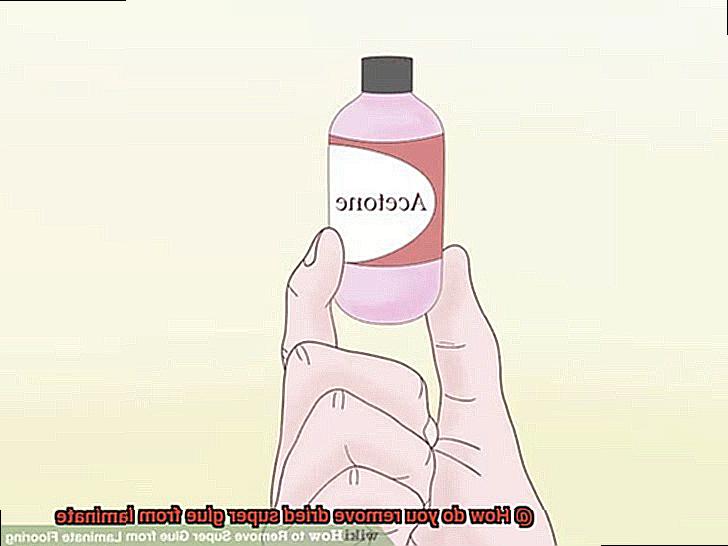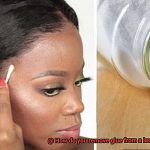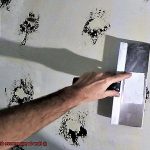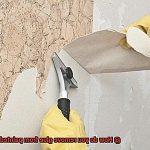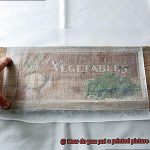Picture this: you’re knee-deep in a DIY project or fixing something at home when disaster strikes. Suddenly, you find yourself staring at dried super glue clinging stubbornly to your beloved laminate surface. But fear not. In this blog post, we’re diving into the nitty-gritty of tackling this sticky situation like a seasoned pro.
Step-by-Step Instructions:
- Gather your gear: To conquer dried super glue on laminate, arm yourself with some trusty household heroes. Grab acetone or non-oily nail polish remover (no additives), a clean cloth or sponge, a plastic scraper or even an old credit card, and some dish soap.
- Safety first: Before diving headfirst into the removal process, take precautions to protect yourself and your surroundings. Slip on gloves to shield your hands from any potential chemical mishaps and lay down a drop cloth or old towels beneath the affected area to catch any stray drips.
- Test the waters: Before unleashing your solution on that pesky dried super glue, play it safe and test it on a small hidden spot of the laminate surface first. This little experiment ensures that the solution won’t leave behind any unsightly stains or damage.
- Soak it up: Moisten a clean cloth or sponge with your chosen solvent (acetone or nail polish remover). You want it damp but not dripping wet – too much liquid could cause trouble by seeping into the laminate and causing swelling or warping.
- Apply with care: Gently dab the solvent-soaked cloth onto the dried super glue, letting it work its magic for a few minutes. Be gentle – no aggressive rubbing here. We don’t want to spread that glue around or harm our precious laminate.
- Scrape away gently: Armed with a plastic scraper or an unused credit card, carefully scrape off the softened super glue. Move with a delicate touch to avoid scratching the surface, applying just enough pressure to get the job done. Take your time and tackle small sections at a time – minimizing any potential harm.
- Suds up: Once you’ve removed most of that pesky glue, whip up a mixture of warm water and a few drops of dish soap. Soak a clean cloth in this soapy solution and gently wipe away any remaining residue, remembering to rinse the cloth regularly.

What is Super Glue and How Does it Bond?
Contents
- 1 What is Super Glue and How Does it Bond?
- 2 Why is it Difficult to Remove Dried Super Glue from Laminate?
- 3 Test Cleaning Solutions and Methods on a Small Area First
- 4 Home Remedies for Removing Dried Super Glue from Laminate
- 5 Commercial Products for Removing Dried Super Glue from Laminate
- 6 Tips and Tricks for Easier Removal of Dried Super Glue from Laminate
- 7 Patience is Key When Removing Dried Super Glue from Laminate
- 8 Alternative Solutions for Stubborn or Older Dried Super Glue Stains on Laminate
- 9 Conclusion
Super glue, also known as cyanoacrylate adhesive, is a formidable adhesive with a reputation for its robust and speedy bonding capabilities. This adhesive, widely used in various applications, contains cyanoacrylate as its primary ingredient – a type of acrylic resin. When this resin comes into contact with moisture, like the humidity in the air or the moisture on the surfaces to be bonded, a remarkable chemical reaction unfolds.
During this reaction, the cyanoacrylate resin undergoes rapid polymerization, transforming into long chains of molecules. This process generates intense heat and creates an indomitable bond between the surfaces being joined. The resulting bond possesses exceptional durability and can withstand substantial force, making it an invaluable asset for any project. Furthermore, this bond exhibits resilience against environmental factors such as temperature fluctuations and moisture.
It is important to note that super glue is most effective when used on non-porous surfaces like glass, metal, ceramics, and certain plastics. However, it may not deliver the same level of effectiveness on porous materials such as wood or fabric. To ensure a successful bond, proper surface preparation is paramount. Surfaces should be meticulously cleaned, thoroughly dried, and devoid of any oils or contaminants that might impede the bonding process.
While super glue’s expedient bonding properties are undoubtedly advantageous, caution must be exercised when handling it. The adhesive adheres to skin swiftly and can cause irritation or burns if mishandled. In the event of accidental skin contact, it is recommended to promptly soak the affected area in warm soapy water and gently peel or roll the bonded surfaces apart.
Why is it Difficult to Remove Dried Super Glue from Laminate?
Super glue, also known as cyanoacrylate adhesive, is notorious for its ability to form an unyielding bond on various surfaces, including laminate. In this blog post, we will delve into the reasons why removing dried super glue from laminate can be such a challenging task.
The Chemistry Behind Super Glue:
Super glue’s strength lies in its chemical composition. When exposed to moisture in the air, it undergoes a rapid polymerization reaction, forming long chains of polymers that create a solid and rigid structure. This strong bond is what makes super glue so effective but also contributes to the difficulty of removing it from laminate surfaces.
The Non-Porous Nature of Laminate:
Laminate surfaces are typically smooth and non-porous, meaning they do not readily absorb liquids or allow them to penetrate. This poses a challenge when trying to remove dried super glue because solvents or cleaning agents struggle to reach and dissolve the adhesive. The non-porous nature of laminate acts as a barrier, preventing any solvent from effectively breaking down the bond between the super glue and the surface.
Protective Coatings:
To add insult to injury, laminate surfaces often have a protective layer or resin coating. While this coating serves to enhance the appearance and durability of the laminate, it further complicates the removal process.
The protective coating acts as an additional barrier that hinders solvents from reaching the dried super glue, making it even more stubborn to remove.
Common Cleaning Products Fall Short:
Many household cleaning products or solvents may lack the necessary strength or chemical composition to dissolve or weaken the bond between super glue and laminate effectively. Therefore, attempting to forcefully remove the dried adhesive can result in damage to the surface, leaving behind unsightly marks or removing the protective coating along with the glue.
Heat as a Solution:
While heat can be used to soften dried super glue, caution must be exercised. Laminate surfaces are sensitive to heat, and excessive temperatures can cause damage. It is crucial to regulate the temperature and avoid using open flames or high heat sources near laminate to prevent warping or discoloration.
Test Cleaning Solutions and Methods on a Small Area First
When faced with the stubborn challenge of removing dried super glue from a laminate surface, it’s crucial to approach the task with caution. Before diving headfirst into battle, take the time to test cleaning solutions and methods on a small area first. This simple step can save you from potential disaster and ensure the preservation of your precious laminate surface.
Laminates come in a variety of types and finishes, and not all cleaning agents or methods are suitable for every surface. That’s why testing on a small, inconspicuous area is absolutely essential. Imagine the nightmare of accidentally discoloring or warping your beautiful laminate countertop – it’s a catastrophe waiting to happen. So, don’t skip this crucial step.
To conduct a small area test, select a hidden corner or an inconspicuous spot that won’t be easily noticeable. Apply a small amount of the cleaning solution or method you intend to use and let it sit for a few minutes as directed. Take a moment to observe the results before proceeding. If there is no adverse reaction such as discoloration or damage, you’re good to go.
When it comes to selecting cleaning solutions, steer clear of abrasive materials or harsh chemicals that can cause permanent damage. Instead, opt for gentler options like warm soapy water, isopropyl alcohol, or acetone-based nail polish remover. These solutions are often effective in breaking down the adhesive properties of super glue without harming the delicate laminate surface.
If traditional cleaning agents don’t do the trick, consider alternative methods that can save the day. Heat can be your ally in this battle. By applying heat to the dried super glue, you can soften it and make it easier to gently scrape off with a plastic scraper or credit card. Another natural remedy worth exploring is vinegar. Apply a small amount and let it sit for a few minutes before wiping clean. Vinegar has the power to dissolve the adhesive bonds of dried super glue, offering you a simple yet effective solution.
Home Remedies for Removing Dried Super Glue from Laminate
We’ve all experienced the frustration of dried super glue on our beloved laminate surfaces. But fear not. With a little know-how and some common household ingredients, you can easily tackle this sticky problem. In this article, we’ll explore effective home remedies that will have your laminate looking good as new in no time.
Acetone: The Superhero Solvent
Acetone is a powerful solvent that can dissolve super glue. Soak a cotton ball or cloth in acetone and gently rub it onto the dried glue. Give it a few minutes to work its magic, then wipe away the softened glue with a soft cloth. Remember, gentle strokes are key to avoiding damage to your laminate surface.
Nail Polish Remover: A Convenient Alternative
Most nail polish removers contain acetone as their main ingredient. Apply it to a cotton ball or cloth and gently rub it onto the dried super glue. Let it sit for a few minutes before wiping away with a soft cloth – voila.
Rubbing Alcohol: The Versatile Warrior
Rubbing alcohol is another powerful solvent in your arsenal. Soak a cotton ball or cloth in rubbing alcohol and apply it to the dried glue. Give it a few minutes to work its magic before gently wiping away with a soft cloth. This method is particularly handy for more delicate laminate surfaces.
Vinegar: The Natural Wonder
Vinegar’s natural cleaning properties can also dissolve super glue. Soak a cloth in vinegar and apply it to the glued area. Allow it to sit for a few minutes before wiping away with a soft cloth. Patience may be required, but vinegar will eventually dissolve the glue.
Warm Soapy Water: The Gentle Approach
For those who prefer a milder solution, warm soapy water can also do wonders. Mix a few drops of dish soap with warm water and apply it to the glued area. Give it a few minutes to work its magic before gently scrubbing away the glue with a soft cloth or sponge.
Baking Soda Paste: The Abrasive Ally
Baking soda can be your secret weapon in removing dried super glue from laminate. Create a paste by mixing baking soda with a small amount of water. Apply the paste to the glued area and gently scrub it in circular motions with a soft cloth or sponge. Rinse the area with warm water and wipe away any residue – presto.
Coconut Oil: The Sweet Scented Savior
Coconut oil can help loosen dried super glue from laminate surfaces. Apply a small amount of coconut oil to the glued area and let it sit for a few minutes. Gently rub the area with a soft cloth to remove the glue. Coconut oil not only helps dissolve the adhesive, but it also leaves a pleasant scent behind.
Commercial Products for Removing Dried Super Glue from Laminate
There are commercial products specifically designed to tackle this sticky situation. These superheroes of the glue removal world are armed with powerful solvents and ingredients that dissolve the glue without causing any harm to your beloved laminate.
So, let’s explore the different types of commercial products available. You have adhesive removers, glue dissolvers, and super glue removers. These products come in the form of liquids or gels, making application a breeze. Some popular brands known for their effectiveness include Goo Gone, Goof Off, and Loctite Super Glue Remover.
Using these commercial products is as easy as pie. Simply apply the product onto the dried glue, let it sit for a few minutes to work its magic, and then gently scrape or wipe away the dissolved glue. Be sure to carefully follow the instructions provided on the packaging for safe and effective use.
Safety first. When dealing with these powerful products, it’s important to take precautions. Consider wearing gloves to protect your hands from potential skin irritation, and make sure you’re working in a well-ventilated area to avoid inhaling any fumes.
One of the great things about these commercial products is their ability to tackle even the most stubborn or copious amounts of dried super glue on your laminate surfaces. They’re like the secret weapon in your arsenal against those pesky adhesive mishaps.
Tips and Tricks for Easier Removal of Dried Super Glue from Laminate
Removing dried super glue from laminate can be a frustrating task, but with the right tips and tricks, it doesn’t have to be a nightmare. In this guide, we will explore various methods and techniques to help make the removal process easier and more effective. So, let’s dive in and learn how to say goodbye to dried super glue stains on your laminate surfaces.
Acetone or Nail Polish Remover:
One of the most effective ways to remove dried super glue from laminate is by using acetone or nail polish remover. These products contain chemicals that can dissolve the glue and make it easier to remove.
However, it’s crucial to test a small, inconspicuous area of the laminate first to ensure that the acetone or nail polish remover does not damage the surface. If all goes well, soak a cotton ball or soft cloth in the acetone or nail polish remover and gently rub it on the dried glue.
This should help break down the adhesive properties of the super glue and make it easier to remove.
Soak the Affected Area:
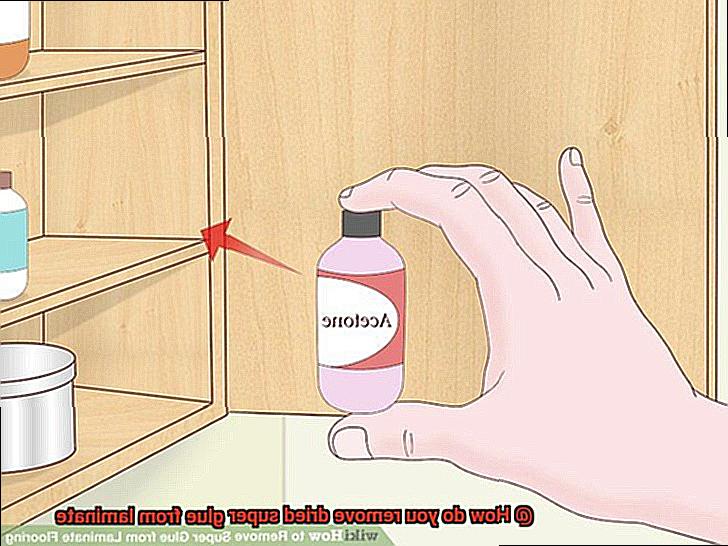
If the dried super glue is thick or stubborn, try soaking the affected area in warm soapy water for a few minutes. This helps soften the glue and makes it easier to scrape off with a plastic scraper or credit card. Be gentle when scraping to avoid scratching the laminate surface. If needed, repeat this process multiple times until all the glue is removed.
Rubbing Alcohol:
Another option for removing dried super glue from laminate is rubbing alcohol. Apply a small amount of rubbing alcohol onto a clean cloth and gently rub it onto the glue until it starts to dissolve. Use a plastic scraper or credit card to scrape off the softened glue. Make sure to clean the area with soap and water afterward to remove any residue.
Vinegar:
Vinegar is known for its cleaning properties and can be used to remove dried super glue from laminate as well. Soak a cloth in vinegar and place it on top of the glue for a few minutes.
The acid in vinegar helps break down the glue, making it easier to remove. After a few minutes, use a plastic scraper or credit card to scrape off the softened glue.
Heat:
Applying heat to the dried super glue can also help loosen its grip on the laminate surface. You can use a hairdryer on a low heat setting or a heat gun on a low temperature setting to heat up the glue.
Once it becomes soft, use a plastic scraper or credit card to gently scrape off the glue. Be careful not to overheat the surface and cause damage.
Patience is Key When Removing Dried Super Glue from Laminate
Removing dried super glue from laminate surfaces can be a challenging task, but with patience and the right approach, it can be done successfully. This article will provide an in-depth look at the process of removing dried super glue from laminate surfaces, as well as tips and tricks for doing so efficiently.
We will cover topics such as the best tools to use, how to prepare the surface before attempting removal, and how to clean up any residue afterwards. Finally, we’ll discuss what to do if all else fails and you still have stubborn super glue stuck on your laminate surface. By following these steps, you should be able to remove dried super glue from laminate surfaces quickly and easily.
Understanding Laminate Surfaces:
Laminate surfaces are smooth and non-porous, which means that the glue doesn’t penetrate deep into the material. However, it can still adhere tightly to the surface, making removal a bit challenging. It’s important to approach the removal process with caution to avoid causing any damage to the laminate.
Softening the Glue:
To begin removing dried super glue from laminate, start by softening the glue. Use a hairdryer on a low heat setting and gently warm up the affected area for a few minutes until the glue becomes more pliable. Take your time during this step to ensure that the glue is adequately softened.
Scraping off the Glue:
Once the dried super glue has been softened, use a plastic scraper or even a credit card to delicately scrape it off the laminate surface. Be gentle and avoid applying too much pressure to prevent scratching or damaging the laminate. Work gradually and patiently until all the glue is removed.
Tackling Stubborn Residue:
If there are remnants of super glue left behind after scraping, you can use a mild solvent such as acetone or nail polish remover to dissolve the remaining glue. Apply a small amount of the solvent onto a clean cloth and gently rub the affected area until the glue dissolves. Use the solvent sparingly and test it on an inconspicuous area first to ensure it won’t cause any damage or discoloration to the laminate.
Cleaning and Drying:
After successfully removing the dried super glue, it’s important to clean the area with a mild detergent solution and warm water to remove any residue from the solvent or remaining glue. Use a soft cloth or sponge to gently clean the surface, then rinse thoroughly with clean water. Once clean, dry the surface thoroughly with a clean towel or cloth.
Final Touches:
Inspect the laminate surface for any signs of damage. If you notice any minor scratches or imperfections, you can use a laminate repair kit to fix them. Follow the instructions provided with the repair kit and take your time to ensure a seamless finish.
Alternative Solutions for Stubborn or Older Dried Super Glue Stains on Laminate
There are alternative solutions that you can explore before resorting to more aggressive methods. In this comprehensive guide, we will delve into different ways to banish those irksome stains without causing harm to your precious laminate.
One popular option is the use of acetone, commonly found in nail polish removers. Begin by taking a clean cloth or cotton ball and applying a small amount of acetone. Gently rub the affected area, but exercise caution by testing it on a small, inconspicuous area of the laminate first to avoid any unwanted discoloration or damage.
If acetone fails to yield satisfactory results, consider turning to rubbing alcohol. Dampen a cloth with this potent substance and delicately rub the dried super glue stain. The alcohol works its magic by dissolving the glue, rendering it easier to remove. Once again, take care by testing it on a discreet corner of the laminate surface to ensure that no adverse effects occur.
Yet another alternative solution lies in the realm of white vinegar. Pour a small amount onto a cloth and gently rub the stain. Vinegar’s acidic properties hold the power to break down the stubborn glue, making it easier for you to bid farewell to the unsightly stain. As always, remember to conduct a test on an inconspicuous area prior to full-scale application.
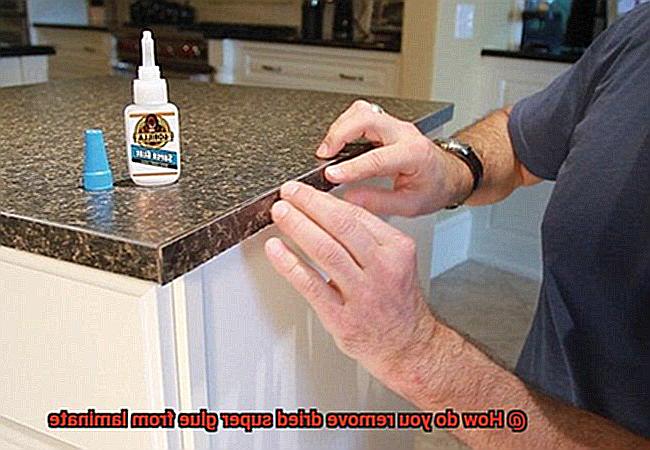
For those truly obstinate stains that refuse to budge, consider employing a plastic scraper or credit card as your trusty ally. With utmost care, scrape away the dried glue, being mindful not to exert excessive pressure or employ sharp objects that could mar or damage the laminate surface.
Should heat be your preferred weapon of choice, wield a hairdryer set on low heat. Direct the warm air towards the stain, and as the glue begins to soften under its gentle caress, nimbly scrape it away with a plastic scraper or credit card.
It is important to note that these alternative solutions may not be universally effective on all laminate surfaces, as some may possess a greater sensitivity or susceptibility to damage. Therefore, it is imperative to conduct a small-scale test on an inconspicuous area before embarking on the full-scale assault against the stain.
If all else fails and victory remains elusive, do not hesitate to seek professional assistance or resort to specialized adhesive removers specifically formulated for laminate surfaces. These potent concoctions are designed to dissolve stubborn stains without inflicting harm.
pNN2Scx32k8″ >
Also Read: How To Remove Glue From Laminate Flooring?
Conclusion
Removing dried super glue from laminate can be a frustrating task, but fear not.
There are several effective methods you can try to save your laminate surfaces from this sticky situation. One option is to use acetone, a powerful solvent that can dissolve the super glue bonds.
Simply soak a cloth in acetone and gently rub the affected area until the glue starts to loosen. Another alternative is using nail polish remover, which contains acetone as well.
Apply it to a cloth and dab at the glue until it softens. If these options don’t work, you can also try using rubbing alcohol or vinegar as they have adhesive-breaking properties.
Remember to test any solution on a small, inconspicuous area first to ensure it doesn’t damage your laminate.

